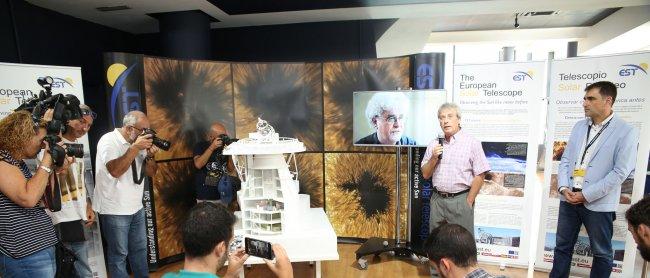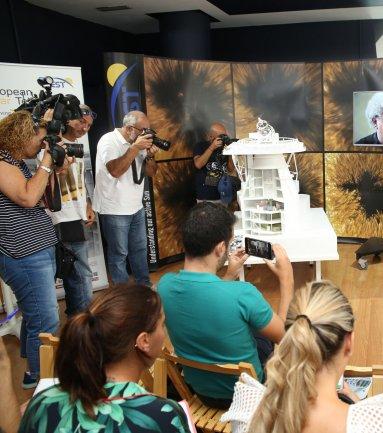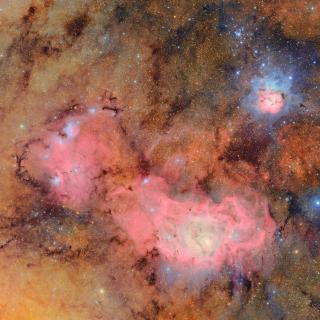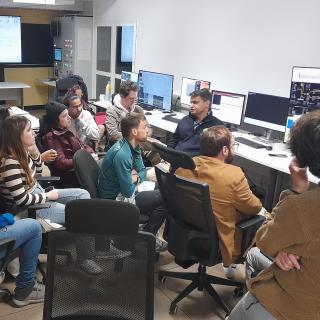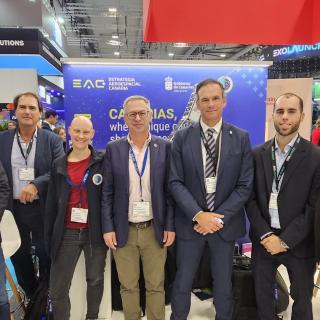The European Solar Telescope (EST) is a project led by the Instituto de Astrofísica de Canarias (IAC) to construct the largest solar telescope in Europe with a diameter of 4m, at one of the two observatories in the Islands. Its main purpose will be to study phenomena such as sunspots and solar flares, with unprecedented accuracy, and a resolution of a few tens of kilometres at the surface of the Sun. The EST will allow us to better understand the emission of large quantities of electrically charged material, which can cause problems with our systems of communications.
The model of this telescope, on a scale of 1:50, can be seen at the Elder Museum of Science and Technology in Las Palmas during the month beginning today. Its presentation ceremony, which took place this morning, was carried out by Manuel Collados Vera, the coordinator of the project to build the telescope, and José Gilberto Moreno, director of the Elder Museum of Science and Technology of Las Palmas. This model, which had previously been on show at the IAC in La Laguna, and in the conference on “Adaptive Optics for Extremely Large Telescopes” (AO4ELT5) in Puerto de la Cruz, Tenerife, was produced by the Digital Fabrication Service (FABLAB) of the University of La Laguna.
“The EST” explained Manuel Collados, “represents the future of solar physics in Europe, and to develop it we are collaborating with a large number of research institutions. Taking advantage of the wide experience acquired with the solar telescopes presently working in the Canary Island Observatories, the new telescope will be highly optimized and will permit the acquisition of solar images with very high resolution. EST will have the most up to date technology, so that its scientific data of top quality can reach the whole of the research community”.
“The public administrations concerned” added José Gilberto Moreno, the Director of the Elder Museum, “are duty bound to share with citizens in general the research projects which are being carried out in the Canaries”. With this in mind he pointed out that “The model of the largest solar telescope to be made in Europe is being put on show in the Elder Museum in the Santa Catalina Park in the very centre of Las Palmas, so that we can continue bringing science to the inhabitants of Gran Canaria”.
The European Solar Telescope (EST) is one step nearer reality, as it is presently in the preparatory PRE-EST phase. This phase, which will last for four years, is aimed at working out a guide plan for its construction and operation, to prepare the legal and financial agreements needed between all the partners involved in the project, and to intensify the participation of industry in the preliminary design of the telescope and its subsystems, as well as to carry out a comparative study to see whether the final choice of site will be the Teide Observatory, at Izaña (Tenerife), or the Roque de los Muchachos Observatory, in Garafía (La Palma).
More information at:
http://www.est-east.eu/est/index.php
The European Solar Telescope, chosen as a Strategic Scientific Installation for Europe
Video about EST Project: https://www.youtube.com/watch?v=zwbPRNfPoWg
Solar Physics video of the “IAC Investiga” serie:
